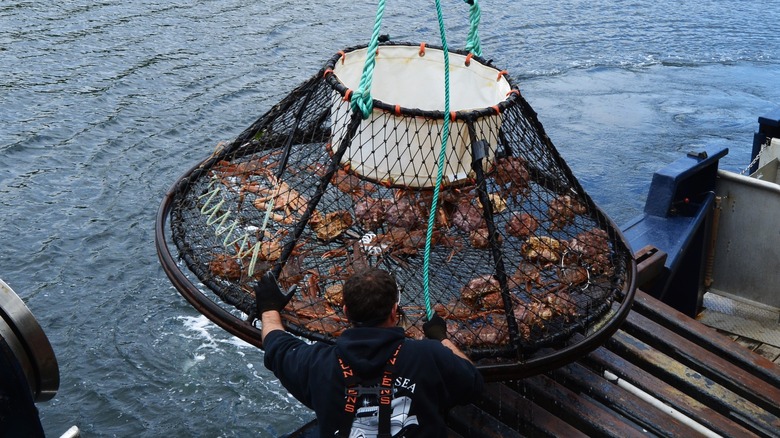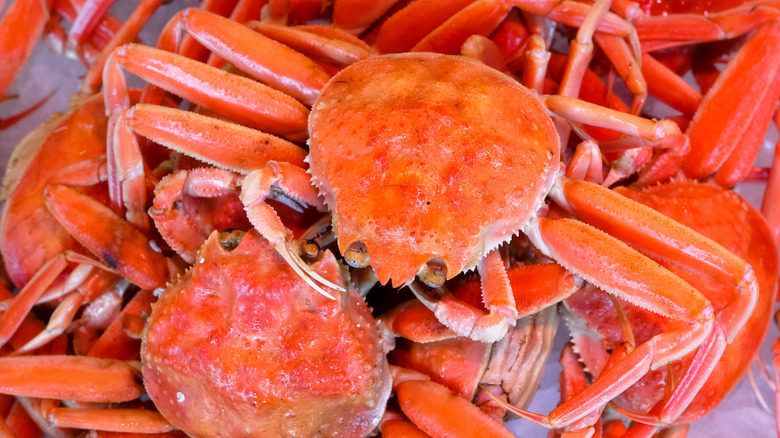Here's Why Alaska's Snow Crab Season Just Got Shut Down
The Discovery series "Deadliest Catch" shows the many rewards and perils of Alaskan crab fishing. Indeed, for nearly two decades, the reality series has taught viewers about the real reasons crab fishing is so dangerous.
Interestingly, however, the drama on the reality television show might actually be tame compared to the real-life 2022/23 Alaskan snow crab season. Although those depictions portray a bounty waiting to be captured in the sea, the fishing industry is aware that it is at the mercy of nature. According to the World Wildlife Fund, overfishing is described as "when vessels catch fish faster than stocks can replenish." While the phrase that there are plenty of fish in the sea might sound cliché, the reality is that a variety of factors can turn that saying into an untruth.
The Alaskan fishing industry is regulated by Alaska's Department of Fish and Game (ADF&G) and the National Marine Fisheries Service. Each year, the regulatory entities survey the area to determine whether there is sufficient marine population to meet a threshold for fishing. While the organization appreciates that changes to the fishing season can and will impact both the industry and personal livelihoods, its primary focus is on ensuring the long-term viability of the crab population.
As seen in a recent advisory announcement, the 2022/23 Alaskan snow crab season has fishermen putting the ships in docks and stacking the traps for another year.
Many factors contributed to the closure
While overfishing can be a concern with commercial harvesting, the 2022/23 Alaskan snow crab season appears to be closed for several reasons. As reported by CNN, the first-ever closing arose from concerns over both overfishing and human-caused climate change. Michael Litzow, the Kodiak lab director for NOAA Fisheries, told the publication that rising temperatures, low ice levels, and other factors created an environment where the snow crabs were not able to thrive and repopulate. Given that scenario, it would have been irresponsible to allow the industry to remove more snow crabs than were repopulating.
Although scientists are speculating as to why the snow crabs are not thriving, The New York Times quoted biologist Miranda Westphal, who explained that 90% of the animals in the state were lost from 2018 to 2021. According to Westphal, snow crabs are an Arctic species that thrive best in especially cold waters. As the Bering Sea's temperatures rose, the environment was not conducive for the Arctic Sea creatures. Westphal speculated that "they probably starved to death and there was not enough food."
Although shutting down the season will have a financial impact on the fishing industry, the environmental agencies need to balance the impact on long-term conservation and sustainability. The snow crab season shutdown will put a pinch on much of the Alaskan economy, but cracking the reason why the crustaceans disappeared from the chilly waters has ultimately been deemed a more pressing question to resolve.

